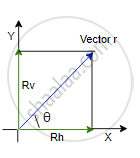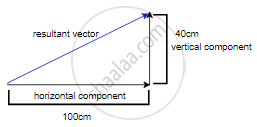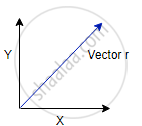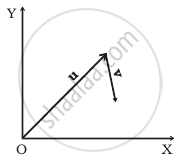Topics
Units and Measurements
- Introduction of Units and Measurements
- System of Units
- Measurement of Length
- Measurement of Mass
- Measurement of Time
- Dimensions and Dimensional Analysis
- Accuracy, Precision and Uncertainty in Measurement
- Errors in Measurements
- Significant Figures
Mathematical Methods
- Vector Analysis
- Vector Operations
- Resolution of Vectors
- Multiplication of Vectors
- Introduction to Calculus
Motion in a Plane
- Introduction to Motion in a Plane
- Rectilinear Motion
- Motion in Two Dimensions-Motion in a Plane
- Uniform Circular Motion (UCM)
Laws of Motion
- Introduction to Laws of Motion
- Aristotle’s Fallacy
- Newton’s Laws of Motion
- Inertial and Non-inertial Frames of Reference
- Types of Forces
- Work Energy Theorem
- Principle of Conservation of Linear Momentum
- Collisions
- Impulse of Force
- Rotational Analogue of a Force - Moment of a Force Or Torque
- Couple and Its Torque
- Mechanical Equilibrium
- Centre of Mass
- Centre of Gravity
Gravitation
- Introduction to Gravitation
- Kepler’s Laws
- Newton’s Universal Law of Gravitation
- Measurement of the Gravitational Constant (G)
- Acceleration Due to Gravity (Earth’s Gravitational Acceleration)
- Variation in the Acceleration Due to Gravity with Altitude, Depth, Latitude and Shape
- Gravitational Potential and Potential Energy
- Earth Satellites
Mechanical Properties of Solids
- Introduction to Mechanical Properties of Solids
- Elastic Behavior of Solids
- Stress and Strain
- Hooke’s Law
- Elastic Modulus
- Stress-strain Curve
- Strain Energy
- Hardness
- Friction in Solids
Thermal Properties of Matter
- Introduction to Thermal Properties of Matter
- Heat and Temperature
- Measurement of Temperature
- Absolute Temperature and Ideal Gas Equation
- Thermal Expansion
- Specific Heat Capacity
- Calorimetry
- Change of State
- Heat Transfer
- Newton’s Law of Cooling
Sound
- Introduction to Sound
- Types of Waves
- Common Properties of All Waves
- Transverse Waves and Longitudinal Waves
- Mathematical Expression of a Wave
- The Speed of Travelling Waves
- Principle of Superposition of Waves
- Echo, Reverberation and Acoustics
- Qualities of Sound
- Doppler Effect
Optics
- Introduction to Ray Optics
- Nature of Light
- Ray Optics Or Geometrical Optics
- Reflection
- Refraction
- Total Internal Reflection
- Refraction at a Spherical Surface and Lenses
- Dispersion of Light Through Prism and Formation of Spectrum
- Some Natural Phenomena Due to Sunlight
- Defects of Lenses (Aberrations of Optical Images)
- Optical Instruments
- Optical Instruments: Simple Microscope
- Optical Instruments: Compound Microscope
- Optical Instruments: Telescope
Electrostatics
- Introduction to Electrostatics
- Electric Charges
- Basic Properties of Electric Charge
- Coulomb’s Law - Force Between Two Point Charges
- Principle of Superposition
- Electric Field
- Electric Flux
- Gauss’s Law
- Electric Dipole
- Continuous Distribution of Charges
Electric Current Through Conductors
- Electric Current
- Flow of Current Through a Conductor
- Drift Speed
- Ohm's Law (V = IR)
- Limitations of Ohm’s Law
- Electrical Power
- Resistors
- Specific Resistance (Resistivity)
- Variation of Resistance with Temperature
- Electromotive Force (emf)
- Combination of Cells in Series and in Parallel
- Types of Cells
- Combination of Resistors - Series and Parallel
Magnetism
- Introduction to Magnetism
- Magnetic Lines of Force and Magnetic Field
- The Bar Magnet
- Gauss' Law of Magnetism
- The Earth’s Magnetism
Electromagnetic Waves and Communication System
- EM Wave
- Electromagnetic Spectrum
- Propagation of EM Waves
- Introduction to Communication System
- Modulation
Semiconductors
- Introduction to Semiconductors
- Electrical Conduction in Solids
- Band Theory of Solids
- Intrinsic Semiconductor
- Extrinsic Semiconductor
- p-n Junction
- A p-n Junction Diode
- Basics of Semiconductor Devices
- Applications of Semiconductors and P-n Junction Diode
- Thermistor
- Resolution of a Vector
- Unit Vector
How do we calculate the rectangular components of a given vector?
We should know that there are two rectangular components for a vector, i.e. the horizontal component and the vertical component, the horizontal component lies on the x-axis whereas the vertical component lies on the y-axis,
Think of it this way; the horizontal component will resemble the shadow of the vector r falling on the x-axis if the light were shining from above. Similarly, the vertical component will resemble the shadow of vector r falling on the y-axis if the light were shining from the side.
Now let us call the vertical component `bar r_v` and the horizontal vector as `bar r_h` and let us call the angle made by the vector `bar r` with the horizontal component as θ.
If we notice carefully the 3 vector `bar r_v bar r_h and bar r`form the 3 sides of a right angled traingle, so from the trigonometry we can say that,
`|bar r_h| = | bar r| cos θ `
The reason is for the angle θ r is the hypotenuse and `r_h`is the adjacent side, so adj/hyp = cosine of the angle, so from this rule we can find the magnitude of the horizontal vector given that we know the magnitude of the vector r and the angle it makes with the horizontal vector.
Similarly, the magnitude of the vertical component can be found using the sine function because vertical component resembles the opposite side of the triangle and opp/hyp = sine of the angle, thereby the magnitude of the vertical component is given by,
`|bar r_v| = | bar r| sin θ`
Now that we know how to get the magnitude of the rectangular components of the two vectors how do we find out the direction and the magnitude of the resultant vector if its horizontal and vertical components are given, this could be done easily with a graphical method,
Imagine we have the horizontal component of magnitude 100 Newtons and a vertical component of magnitude 40 Newtons then we can draw a right-angled triangle with the given data. By plotting the lengths of the vectors proportional to their magnitude. i.e.

Now the resultant vector could be drawn as the hypotenuse, and the length of the vector gives us the magnitude of the resultant vector as well as its direction.
RESOLUTION OF VECTORS
Consider the following vector r; the vector r can be resolved into horizontal and vertical components, these two components add up to give us the resultant vector i.e. vector r as shown in the figure above.
Unit Vector
A unit vector is a vector of unit magnitude and points in a particular direction. It is used to specify the direction only. Unit vector is represented by putting a cap (^) over the quantity.
The unit vector in the direction of `barA` is denoted by `Â` and defined by
`Â= (barA)/(|barA|)=(barA)/A or barA=AÂ`


